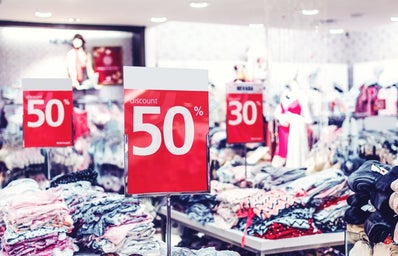The other day, when scrolling through my Instagram feed, I saw that an influencer I follow posted a picture in collaboration with Primark. Since I was quite surprised about this product placement which, in my eyes, is one of the most unethical things an influencer can accept, I read through her caption, curious to see how she justifies this rather questionable brand deal. When reading it, I found out that she was advertising the “Primark cares” collection, a range that is supposed to be more environmentally friendly and sustainable. Primark and sustainability? Sounds like a bit of an oxymoron, right?
Just as a reminder, in the past few years, Primark has been targeted by human rights organisations who criticized the less than human working conditions the Primark garment workers are exposed to. The main piece of criticism: the factories, that absolutely do not conform to basic health and safety standards. The Rana Plaza disaster, which occurred in 2013, clearly shed light on this issue. This event, in addition to the other heavy international criticism, majorly harmed Primark’s and other fast-fashion brands’ reputation. As a result, they had to come up with a strategy to polish their image. Their solution? The creation of “green” and eco-friendly labels and collections!
What Primark and other similar fast-fashion brands are doing with this is something called greenwashing, a term you probably have vaguely heard of.
What exactly is greenwashing?
Unfortunately, there isn’t one clear definition of this term since every source has its own. However, the bottom line is the same: “Greenwashing is when a company or organization spends more time and money on marketing themselves as environmentally friendly than on minimizing their environmental impact.” In other words, greenwashing is when a company pretends to care about environmental protection by creating flashy campaigns about how sustainable they are, or how they want to be. The latter often contain extremely misleading information, phrased in a way that makes the consumer believe that, by buying these supposedly sustainable products, they directly contribute to the protection of the environment. This practice is unfortunately extremely common, especially now, in an era when sustainability is becoming a major concern, particularly for the younger generation, and can therefore be used as a marketing tool. People can therefore consume as much as they used to do but, this time, with a clear conscience.
How does this look like in practice?
For this section, I will use Primark’s “Primark Cares” campaign as an example. However, this explanation is applicable to most of the other famous fast fashion brands (“H&M Conscious” or “Zara Join Life” to name a few).
When going to the Primark Cares section on the Primark website, the information given is extremely vague, imprecise, and blurry. What is most apparent is that the website is essentially a collection of sweeping statements, to make us customers believe that they truly care about the environment and that they would always choose the latter over their own profit. The most emphasis is put on their wish to use more sustainable materials, such as organic cotton. Primark is also training more than 160,000 independent farmers to use less pesticide, fertiliser, and water.
One thing I found interesting is the fact that on the Primark cares website, there is almost no mention of the company wanting to improve their garment workers’ working conditions, which is their main point of criticism. The only information we can find about this matter is: “Every time we take on a new Primark supplier, they must commit to meeting the internationally recognised standards set out in our Code of Conduct. […] team on the ground carry out around 3,000 inspections every year to ensure workers’ hours, wages and rights are protected.” In the words of Katrin Wenz, an expert in agriculture at Friends of the Earth Germany (BUND), “these own-brand sustainability labels rarely tell us anything about what happens later on in the production chain.”, which clearly emphasises the fact that brands like Primark hide behind the “sustainable materials” argument in order to steer the attention away from the horrible working conditions their workers are exposed to.
Can fast fashion and sustainability unite?
Two statements on the website that I found interesting but also extremely outrageous are the following: “We believe that our customers shouldn’t have to choose between affordability and sustainability “and “As well as getting better value for money by keeping your clothes in use for longer, we’re also creating less waste and therefore reducing the impact your wardrobe has on the planet.” These very confidently phrased sentences make us believe that fast-fashion and environmental protection can go hand in hand. However, in more ways than one, that is not true!
When one thinks about it, the concept of fast fashion is fundamentally unsustainable, since the latter consists in producing as many clothes as possible in the shortest period of time, in order to renew the selection in the shops regularly. For example, Primark releases 24 collections per year. This practice in itself is unsustainable, since, in order to produce this amount of clothes for an extremely low price, you have to save money in certain departments, such as the materials used to make the clothes and the workers’ wages. The materials used by Primark, such as polyester or polyamide, are synthetic, often stem from microplastic, and are a lot less durable, which totally goes against the statement made on their website. This concept also encourages the vicious circle of fast-fashion which consists in buying more and more clothes that last less. This is also a major environmental issue since this causes tremendous amounts of garment waste.
In conclusion, despite trying to picture themselves as more environmentally friendly and conscious, fast-fashion brands such as Primark, H&M and co. are, by their business model (which is, to produce as many clothes as possible in order to maximize their profit) cannot, fundamentally, be sustainable. So next time you see a so-called “green label” in a fast fashion, think twice whether you want to give in. The environment will thank you later!


